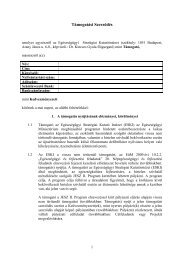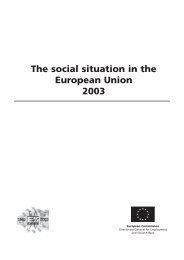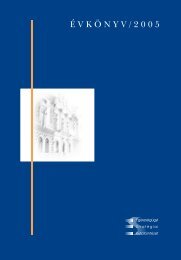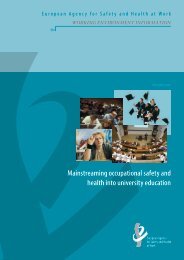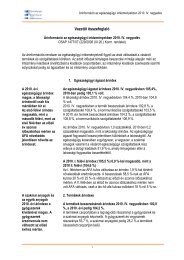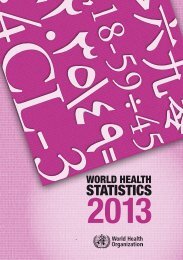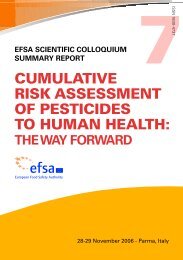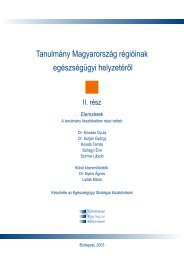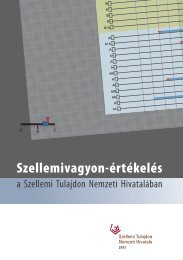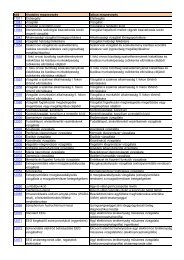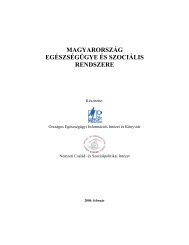WHO Technical Report Series, No. 981 - World Health Organization
WHO Technical Report Series, No. 981 - World Health Organization
WHO Technical Report Series, No. 981 - World Health Organization
You also want an ePaper? Increase the reach of your titles
YUMPU automatically turns print PDFs into web optimized ePapers that Google loves.
Annex 3<br />
Table continued<br />
Description of change<br />
Conditions to<br />
be fulfilled<br />
Documentation<br />
required<br />
<strong>Report</strong>ing<br />
type<br />
10b.2 change in the<br />
1–2, 4, 6–8, 10 3–4, 11–12 Vmin<br />
manufacturing process<br />
10c of the API<br />
1–2, 4–7 3–4, 11–12 Vmin<br />
10d <strong>No</strong>ne 2–14 Vmaj<br />
Conditions to be fulfilled<br />
1. <strong>No</strong> change in the physical state (e.g. crystalline, amorphous) of the API.<br />
2. For low solubility APIs, there is no change in the polymorphic form and whenever<br />
particle size is critical (including low solubility APIs) there is no significant change<br />
in the particle size distribution compared to that of the API lot used in the<br />
preparation of the biobatch.<br />
3. The API manufacturing site is currently accepted through the APIMF procedure.<br />
4. Where materials of human or animal origin are used in the process, the<br />
manufacturer does not use any new process for which assessment of viral safety<br />
data or TSE risk assessment is required.<br />
5. <strong>No</strong> change in the route of synthesis (i.e. intermediates remain the same) and there<br />
are no new reagents, catalysts or solvents used in the process.<br />
6. <strong>No</strong> change in qualitative and quantitative impurity profile or in physicochemical<br />
properties of the API.<br />
7. The change does not affect the sterilization procedures of a sterile API.<br />
8. The change involves only steps before the final intermediate.<br />
9. The change does not require revision of the starting material, intermediate or API<br />
specifications.<br />
10. The change does not require revision of the API specifications.<br />
Documentation required<br />
1. A copy of the APIMF amendment acceptance letter.<br />
2. (P.8.2) If the quality characteristics of the API are changed in a way that may impact<br />
the stability of the FPP, a commitment to put under stability one production-scale<br />
batch of the FPP and to continue the study throughout the currently accepted<br />
shelf-life and to immediately report any out of specification results to <strong>WHO</strong>/PQP.<br />
3. (S.2.2) A side-by-side comparison of the current process and the new process.<br />
4. (S.2.2) A flow diagram of the proposed synthetic process(es) and a brief narrative<br />
description of the proposed manufacturing process(es).<br />
5. (S.2.3) Information on the quality and controls of the materials (e.g. raw materials,<br />
starting materials, solvents, reagents, catalysts) used in the manufacture of the<br />
proposed API, where applicable.<br />
continues<br />
113



